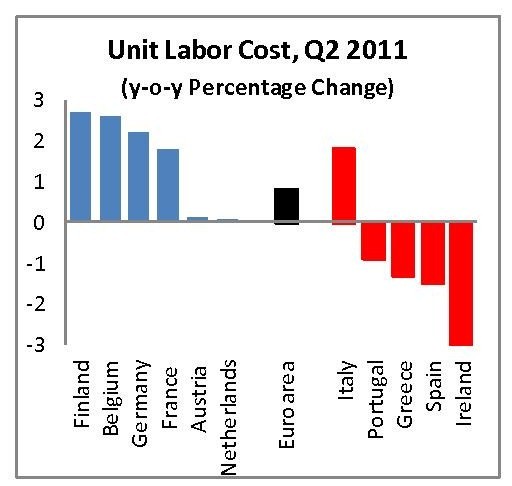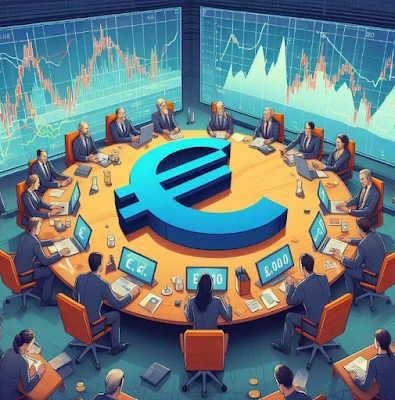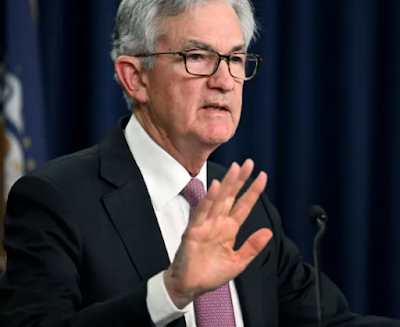Currently European HICP inflation is at 2.5%, far above the 2.0% official ECB mandate, but the euro is becoming weaker and weaker. German salaries are rising with 2.6% per year. At the same time, the ECB cannot hike interest rates, because it wants to provide cheap money to the periphery.
The periphery continues to buy German products, even if they are according to the producer price index 1.7% more expensive than last year. The difference between 2.6% higher salaries and the rise of 1.7% in production prices/costs is an indicator of German productivity. Production costs in the periphery are rising far more quickly. Eurostat reports that the Greek Producer Price Index is up 5.1% on a yearly basis, the Spanish one 3.8% and the Italian one at 2.8%.
Interestingly Unit Labour Costs in 2011 were down for all PPIGS except Italy, but it seems that production prices and costs, the things that really count for competitiveness are up. It seems that there are more things that count to obtain high productivity apart from reducing salaries and firing workers. In the meantime holiday prices in Greece have risen by 12% since last year.
So far the wonderful measures to increase the Southern European competitiveness.
Rising salaries in the Northern part, low interest rates and a weak euro might potentially trigger even higher inflation. The PIIGS except Ireland (that profits on its low-tax regimes and more flexible labour laws) are and will remain in stagflation for months and maybe years.
At the end, there might be only one way-out for the desperate ECB: Currency interventions.
We admit that this scenario is still remote from today’s perspective, but worth remembering.
Are you the author? Previous post See more for Next postTags: competitiveness,ECB,PPI,producer prices,unit labor costs









































